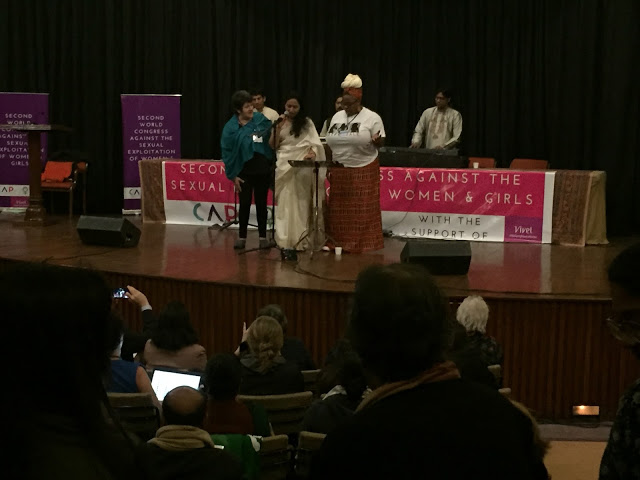Human trafficking is estimated to be a $32 billion per year industry.
CAP International and its Indian member organization, Apne Aap, recently organized The Last Girl First Congress in New Delhi–which gathered an amazing spread of 250 civil society representatives, leaders and decision makers from 30 countries and 5 continents, survivors of prostitution, and representatives of the most marginalized women and girls (indigenous, low caste, migrant, minorities) in hopes to continue to make advances against the sexual exploitation of women and girls.
We were so pleased that GoPhil’s Regional Program Manager Emily Bild could attend this important conference as we are deeply devoted to expanding our global human rights partnerships within this field. A majority of GoPhil’s portfolio of vetted NGOs have missions devoted to the advancement of marginalized women and girls.
During the conference, Emily was able to get a deeper understanding of the variables surrounding human trafficking specifically. Eight different survivors of sexual violence and forced prostitution gave their stories —they came from a vast spectrum geographically– US, Canada, South Africa and India.
Several NGOs with significant experience in fighting human trafficking from various countries spoke of their experience and key learnings. Bishwo Ram Khada, Director of Maiti Nepal , estimates that 270,000 – 400,000 children are involuntarily in prostitution in South Asia. He went on the say that every year approximately 12,000 Nepali girls and women are trafficked to India, with more than 20% of this number representing children. Nepal has changed from being a country of origin for trafficking to also one of both transit and destination country. Women are not only being trafficked for the sex industry. but for surrogacy and breastfeeding, organ and skin transplant, bone and retina donation. The 7,000 km border between India and Nepal is a real challenge to monitor–trafficked women and girls are often given fake passports with faulty date of birth, sometimes even traveling on other people’s passports. Much of this goes on undetected at border controls. Khada stressed that there is no regional instrument to tackle the problem alongside a severe lack of coordination amongst stakeholders. According to him, there is large failure to keep up with the dynamic nature and changing scope of trafficking. Maiti Nepal has rescued 36,045 girls and has 12 transit homes and 3 prevention homes providing rehabilitation to survivors.
Sergey Kapinos spoke from UNODC South Asia – an organization responsible for working on organized crime globally. They state that human trafficking is the most grave form of global crime, now estimated to be a $32 billion per year industry. According to their statistics, women constitute 70% of those trafficking and children are the 2nd largest group – together accounting for 85-90% cases. South Asia is particularly bad because of open and porous borders, creating intense migration flows and very unequal societies. Trafficked women are being jailed for breaking morality laws or illegal immigration and have little to no access to legal support. The biggest challenges, according to UNODOC, are insufficient knowledge and skills at border controls and a lack of cooperation regionally. What is needed are reinforced regional cooperation, a sharing of expertise and good practices surrounding the 4 Ps = protection, prosecution, prevention and partnership.
We were so pleased that GoPhil’s Emily Bild could attend this thought-provoking and informative conference as we continue to invest in and build networks around small NGOs working to combat and prevent it.
